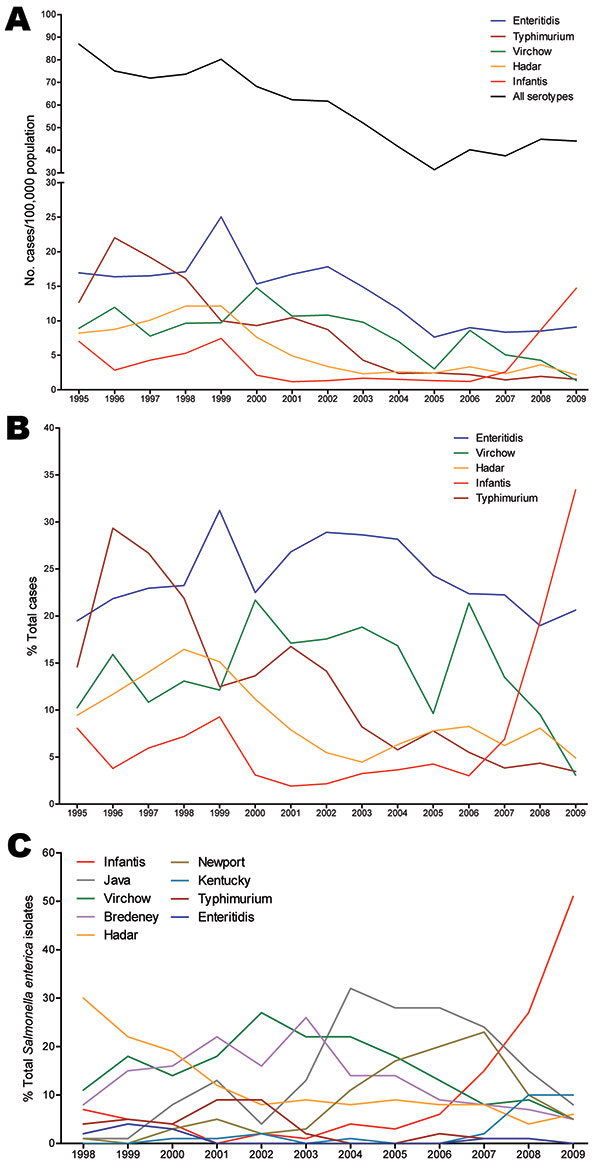Volume 16, Number 11—November 2010
Dispatch
Multidrug-Resistant Salmonella enterica Serovar Infantis, Israel
Figure 1

Figure 1. Salmonellosis epidemiology in Israel, 1995–2009. A) Annual incidence of salmonellosis in Israel. Laboratory-confirmed cases of Salmonella infections per 100,000 population caused by all Salmonella serotypes (black) and by the 5 leading serotypes in Israel. B) The relative contribution (in percentages) of each serotype to the total annual number of Salmonella serotypes. Salmonella infection incidences were constructed according to the number of human Salmonella isolates submitted to the Government Central Laboratories during January 1, 1995–December 31, 2009 (after excluding repeated isolates from the same patient). Data on the Israeli population were derived from the publications of the Israeli Bureau of Statistics. C) Prevalence of S. enterica serovar Infantis and other leading serotypes in poultry. The proportion of different Salmonella serotypes as percentage from the total Salmonella isolates in poultry was analyzed according to routine surveillance in poultry processing plants conducted by veterinary services in 1998–2009. Salmonella isolates have been received, identified, and documented in the National Salmonella Reference Center of Israel.